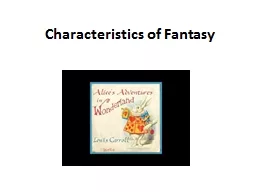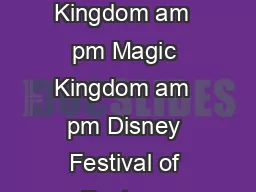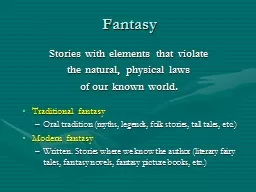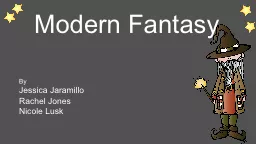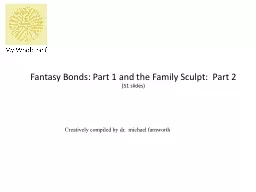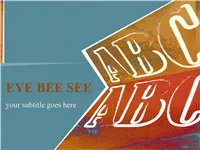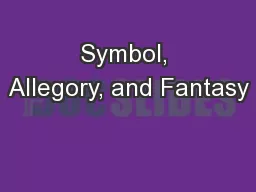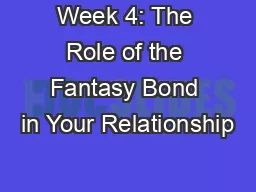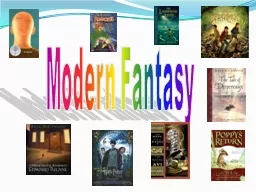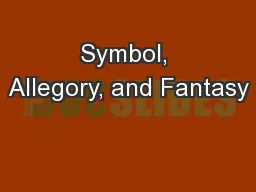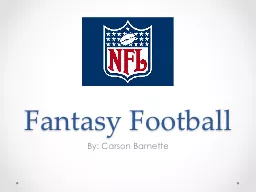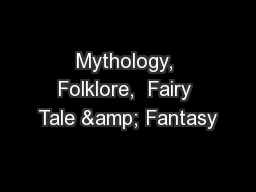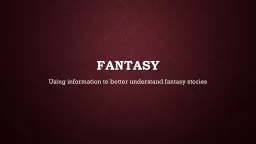PPT-Characteristics of Fantasy
Author : conchita-marotz | Published Date : 2016-08-06
Vocabulary Key VocabularyConcept Definition adages An old short saying that is generally accepted to have some truth to it The early bird gets the worm Better safe
Presentation Embed Code
Download Presentation
Download Presentation The PPT/PDF document "Characteristics of Fantasy" is the property of its rightful owner. Permission is granted to download and print the materials on this website for personal, non-commercial use only, and to display it on your personal computer provided you do not modify the materials and that you retain all copyright notices contained in the materials. By downloading content from our website, you accept the terms of this agreement.
Characteristics of Fantasy: Transcript
Download Rules Of Document
"Characteristics of Fantasy"The content belongs to its owner. You may download and print it for personal use, without modification, and keep all copyright notices. By downloading, you agree to these terms.
Related Documents

